Harvest Timing for Maximum THCA: Oregon Hemp Flower Farm Expert Methods
The art and science of harvesting hemp flower at the precise moment of peak THCA concentration represents one of the most critical skills in modern cannabis cultivation. Oregon's hemp farmers have developed sophisticated methodologies that combine traditional agricultural wisdom with cutting-edge scientific understanding to achieve maximum cannabinoid potency. This comprehensive guide explores the expert techniques used by professional cultivators to determine optimal harvest timing, ensuring that every flower reaches its full therapeutic and commercial potential.
Understanding THCA Development and Maturation
THCA (tetrahydrocannabinolic acid) serves as the non-psychoactive precursor to THC, representing the primary cannabinoid found in fresh cannabis plants. The development of THCA occurs through a complex biosynthetic pathway that begins during the flowering phase and continues until harvest. Oregon's THCA harvest timing experts understand that this process follows predictable patterns that can be monitored and optimized through careful observation and scientific measurement.
The biosynthesis of THCA begins when the plant transitions from vegetative growth to flowering, triggered by changes in light cycles and environmental conditions. During the early flowering stage, the plant produces CBGA (cannabigerolic acid), which serves as the precursor for all major cannabinoids. Specific enzymes then convert CBGA into THCA through a series of chemical reactions that continue throughout the flowering period.
Professional cultivators recognize that THCA concentration follows a bell curve pattern during flower development. Initial levels remain relatively low during the first weeks of flowering, gradually increasing as the plant matures. The concentration typically peaks during a specific window of time before beginning to decline as THCA converts to other compounds or degrades due to environmental factors.
Trichome Analysis: The Foundation of Expert Timing
The microscopic examination of trichomes represents the most reliable method for determining optimal harvest timing. Oregon's hemp farmers have perfected the art of trichome maturity Oregon assessment, utilizing high-powered microscopes and magnifying equipment to evaluate the development stage of these resin-producing structures.
Trichomes undergo distinct phases of development that correspond directly to cannabinoid production and maturity. During the early stage, trichomes appear clear and translucent, indicating active cannabinoid synthesis but suboptimal potency levels. As maturation progresses, trichomes develop a cloudy, milky appearance that signals peak cannabinoid concentration and optimal harvest timing for maximum THCA content.
The transition from clear to cloudy trichomes occurs gradually across the plant, requiring systematic evaluation of multiple flower sites to determine overall maturity. Expert cultivators examine trichomes on both sugar leaves and calyxes, as these areas may mature at different rates. The most experienced farmers can identify subtle variations in trichome development that indicate the narrow window of peak potency harvest timing.
Advanced practitioners also monitor the ratio of different trichome types present on the plant. Capitate-stalked trichomes, which produce the highest concentrations of cannabinoids, require particular attention during maturity assessment. The density, size, and clarity of these structures provide valuable indicators of overall plant readiness and expected potency levels.
Environmental Factors Influencing Harvest Timing
Oregon's diverse microclimates and growing conditions require adaptable approaches to harvest timing that account for environmental variables affecting THCA development. Temperature, humidity, light intensity, and atmospheric pressure all influence the rate of cannabinoid synthesis and the optimal timing for maximum potency harvest.
Temperature plays a crucial role in enzymatic activity governing THCA production. Moderate temperatures typically promote optimal cannabinoid synthesis, while extreme heat can accelerate degradation processes that reduce final potency. Oregon's coastal regions benefit from naturally moderate temperatures, while inland areas may require environmental controls to maintain ideal conditions during the critical final weeks before harvest.
Humidity levels significantly impact both trichome development and harvest timing decisions. High humidity can slow maturation while increasing the risk of mold and mildew development, potentially forcing early harvest before peak potency achievement. Conversely, extremely low humidity may accelerate trichome maturation and increase the risk of premature degradation.
Light cycles and intensity affect not only the transition to flowering but also the rate of final maturation. Oregon's optimal harvest THCA specialists understand that manipulating light schedules during the final weeks can influence both the timing and magnitude of peak cannabinoid production.
Indoor Cultivation Timing Strategies
Indoor cultivation provides unprecedented control over environmental variables, allowing Oregon farmers to optimize conditions for maximum THCA production. The controlled environment of indoor facilities enables precise manipulation of factors that influence harvest timing, resulting in consistently high-potency indoor THCA flower production.
Indoor cultivators utilize sophisticated environmental control systems to maintain optimal conditions throughout the flowering cycle. Temperature and humidity control systems maintain precise parameters that promote healthy trichome development and cannabinoid synthesis. Advanced lighting systems provide consistent photon delivery and enable manipulation of light spectra to influence plant metabolism during critical development phases.
The controlled environment allows for more predictable harvest timing compared to outdoor cultivation. Indoor farmers can extend or accelerate maturation through environmental manipulation, providing flexibility to optimize harvest schedules for maximum potency. This control enables the production of premium indoor THCA with consistently high cannabinoid concentrations.
Monitoring systems in indoor facilities provide real-time data on environmental conditions, plant health, and development progress. Automated sensors track temperature, humidity, light levels, and atmospheric composition, allowing cultivators to make precise adjustments that optimize THCA production. These systems also provide historical data that helps refine timing protocols for future harvests.
Outdoor Cultivation Timing Considerations
Oregon's outdoor hemp cultivation benefits from ideal climate conditions and natural light cycles, but requires different timing strategies compared to indoor production. Outdoor THCA flower cultivation must work within natural seasonal patterns while adapting to weather variations that can impact maturation timing.
Outdoor cultivators must carefully monitor weather forecasts and seasonal patterns to optimize harvest timing. Fall weather in Oregon can be unpredictable, with early frost or extended periods of rain potentially affecting final maturation. Experienced farmers develop contingency plans that allow for flexible harvest timing based on changing weather conditions.
The natural light cycle provides optimal photoperiod transitions that promote healthy flowering and cannabinoid development. However, decreasing daylight hours and changing light quality during fall months require careful monitoring to determine the precise moment of peak maturity. Outdoor harvest techniques THCA specialists utilize a combination of visual assessment, trichome analysis, and environmental monitoring to optimize timing decisions.
Regional variations within Oregon require location-specific timing strategies. Coastal areas benefit from moderate temperatures and consistent humidity, while inland valleys may experience greater temperature fluctuations and drier conditions. Elevation differences also affect timing, with higher altitude locations experiencing earlier frost and shorter growing seasons.
Greenhouse Production Timing Methods
Greenhouse cultivation combines advantages of both indoor and outdoor growing methods, providing environmental control while utilizing natural sunlight. Oregon's greenhouse THCA flower production facilities employ sophisticated timing strategies that maximize the benefits of both approaches.
Greenhouse environments allow for season extension and protection from adverse weather while maintaining connection to natural light cycles. Supplemental lighting systems can extend photoperiods or provide additional photon delivery during low-light periods. Climate control systems maintain optimal temperature and humidity conditions regardless of external weather patterns.
The combination of natural and artificial environmental controls provides flexibility in timing THCA flower harvest for optimal potency. Greenhouse cultivators can extend maturation periods during ideal weather or accelerate harvest before adverse conditions arrive. This flexibility results in consistently high-quality flower with optimized cannabinoid concentrations.
Advanced greenhouse facilities utilize integrated monitoring systems that track both internal and external environmental conditions. These systems provide data on natural light levels, temperature variations, and humidity changes that inform timing decisions. Automated control systems can adjust internal conditions based on external weather patterns, maintaining optimal growing conditions throughout the maturation period.
Professional Assessment Techniques
Professional Oregon hemp farmers employ systematic assessment protocols that combine multiple evaluation methods to determine optimal harvest timing. These professional harvest THCA techniques ensure consistent results and maximum potency achievement across different growing conditions and varieties.
Visual assessment remains a fundamental component of professional timing protocols. Experienced cultivators can identify subtle changes in flower appearance, color, and structure that indicate approaching maturity. Pistil color changes, leaf yellowing patterns, and overall plant architecture provide valuable timing indicators when combined with other assessment methods.
Laboratory testing provides quantitative data on cannabinoid concentrations throughout the maturation period. Professional operations often conduct regular testing during the final weeks of flowering to track THCA development and identify peak concentration timing. This data-driven approach ensures harvest timing decisions are based on actual potency measurements rather than visual assessment alone.
Systematic sampling protocols ensure representative assessment of entire crops. Professional cultivators establish sampling procedures that account for variation within individual plants and across entire growing areas. Multiple sample points provide comprehensive data on maturation progress and help identify the optimal timing for maximum potency harvest.
Variety-Specific Timing Considerations
Different hemp varieties exhibit unique maturation patterns and optimal harvest windows, requiring variety-specific timing strategies for maximum THCA production. Oregon's expert timing hemp specialists develop customized protocols for each cultivar based on genetic characteristics and environmental responses.
Indica-dominant varieties typically exhibit different maturation patterns compared to sativa-dominant cultivars. Indica varieties often reach peak maturity more quickly and may have narrower optimal harvest windows. Sativa varieties may require extended maturation periods but can maintain peak potency levels for longer durations.
Autoflowering varieties present unique timing challenges due to their predetermined flowering schedules. These varieties begin flowering based on age rather than photoperiod changes, requiring modified assessment protocols that account for compressed maturation timelines. Professional cultivators adapt their monitoring schedules to accommodate the accelerated development of autoflowering genetics.
Hybrid varieties combine characteristics from both indica and sativa genetics, resulting in intermediate maturation patterns. The specific genetic background of each hybrid influences optimal harvest timing, requiring individualized assessment protocols. Experienced cultivators maintain detailed records of variety-specific timing patterns to optimize future harvests.
Post-Harvest Considerations for THCA Preservation
Proper post-harvest handling plays a crucial role in maintaining THCA concentrations achieved through optimal harvest timing. Oregon's THCA flower cultivation experts understand that the preservation of cannabinoid potency continues beyond the harvest moment through careful processing and storage protocols.
Immediate post-harvest handling affects final cannabinoid concentrations through proper drying and curing procedures. Rapid moisture removal prevents mold development while maintaining optimal conditions for continued cannabinoid development during the curing process. Professional operations utilize controlled-environment drying rooms that maintain precise temperature and humidity conditions.
Curing processes continue THCA development and enhance overall flower quality through controlled moisture reduction and enzymatic activity. Proper curing techniques can actually increase final THCA concentrations while developing improved flavor and aroma profiles. Professional cultivators employ systematic curing protocols that optimize both potency and sensory characteristics.
Long-term storage conditions significantly impact THCA stability and potency retention. Light, heat, and oxygen exposure can degrade cannabinoids and reduce final potency levels. Professional operations utilize proper packaging and storage protocols that maintain optimal conditions for extended periods, preserving the potency achieved through expert harvest timing.
Advanced Monitoring Technologies
Modern Oregon hemp farms increasingly utilize advanced monitoring technologies to optimize harvest timing decisions and ensure maximum THCA production. These technological solutions provide precise data on plant development and environmental conditions that inform timing protocols and improve consistency across harvests.
Spectral analysis equipment enables real-time assessment of cannabinoid development without destructive sampling. These devices utilize light absorption patterns to estimate cannabinoid concentrations in living plant tissue, providing continuous monitoring of THCA development throughout the maturation period. Advanced systems can track multiple cannabinoids simultaneously, providing comprehensive data on plant chemistry changes.
Environmental monitoring systems provide continuous data on growing conditions that affect maturation timing. Wireless sensor networks track temperature, humidity, light levels, and other parameters across growing areas, providing detailed information on microclimatic variations that influence plant development. This data helps cultivators optimize conditions for maximum cannabinoid production.
Imaging technologies enable systematic monitoring of trichome development across large cultivation areas. High-resolution cameras combined with image analysis software can assess trichome maturity levels and provide quantitative data on development progress. These systems can process large numbers of samples quickly, providing comprehensive assessment of crop maturity status.
Quality Control and Consistency Protocols
Professional Oregon hemp operations maintain strict quality control protocols that ensure consistent harvest timing and maximum THCA production across all batches. These systems combine systematic assessment procedures with detailed record-keeping to optimize timing decisions and maintain product quality standards.
Standardized assessment protocols ensure consistent evaluation of maturation indicators across different growers and facilities. These protocols specify sampling procedures, assessment criteria, and decision-making frameworks that minimize variation in harvest timing decisions. Professional operations provide training to ensure all personnel can accurately assess maturity indicators and make appropriate timing decisions.
Documentation systems track maturation progress and harvest timing decisions for each batch, providing valuable data for continuous improvement of timing protocols. Detailed records enable analysis of timing factors that correlate with final potency levels, helping refine assessment criteria and optimize future harvests.
Quality assurance testing validates timing decisions through laboratory analysis of cannabinoid concentrations in harvested material. These tests confirm that harvest timing achieved desired potency levels and provide feedback for protocol refinement. Professional operations utilize third-party testing to ensure accuracy and objectivity in quality assessments.
Oregon Harvest Methods and Regional Expertise
Oregon's unique position as a leading hemp production region has fostered the development of specialized harvest timing expertise that maximizes THCA production under diverse growing conditions. The state's combination of ideal climate, innovative cultivation practices, and regulatory framework has created an environment where professional cultivators can perfect their timing techniques and achieve consistently high potency levels.
The collaborative nature of Oregon's hemp industry promotes knowledge sharing and continuous improvement of harvest timing methods. Professional cultivators regularly share insights and techniques that advance the overall understanding of optimal timing protocols. Industry associations and educational institutions support research and development activities that refine timing methods and improve consistency across the region.
Oregon's diverse growing regions provide opportunities to develop location-specific timing strategies that account for local climate and environmental conditions. Coastal regions, inland valleys, and mountainous areas each present unique challenges and opportunities for optimizing harvest timing. Professional cultivators adapt their methods to local conditions while maintaining focus on maximum THCA production.
The state's commitment to quality and safety in hemp production has established Oregon as a leader in professional cultivation practices. Strict testing requirements and quality standards ensure that timing optimization efforts focus on both potency and safety, resulting in products that meet the highest industry standards for quality and consistency.
Conclusion
The optimization of harvest timing for maximum THCA production represents a sophisticated blend of traditional agricultural knowledge and modern scientific understanding. Oregon's hemp farmers have developed comprehensive methodologies that account for plant biology, environmental factors, and variety-specific characteristics to achieve consistently high cannabinoid concentrations.
Success in timing optimization requires systematic assessment protocols, environmental monitoring, and continuous refinement of techniques based on results and experience. Professional cultivators understand that optimal timing is not a single moment but rather a narrow window that must be identified through careful observation and analysis.
The integration of advanced technologies with traditional assessment methods provides unprecedented precision in timing decisions, enabling consistent achievement of peak potency levels. As the industry continues to evolve, Oregon's commitment to excellence in cultivation practices ensures continued leadership in THCA production and harvest timing optimization.
Through careful attention to trichome development, environmental conditions, and variety-specific characteristics, Oregon's hemp farmers continue to set industry standards for quality and potency. Their expertise in harvest timing optimization ensures that consumers receive products with maximum therapeutic potential and consistent quality standards.

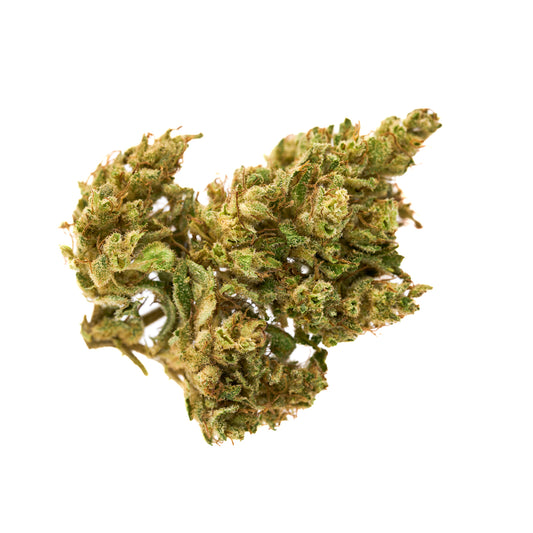
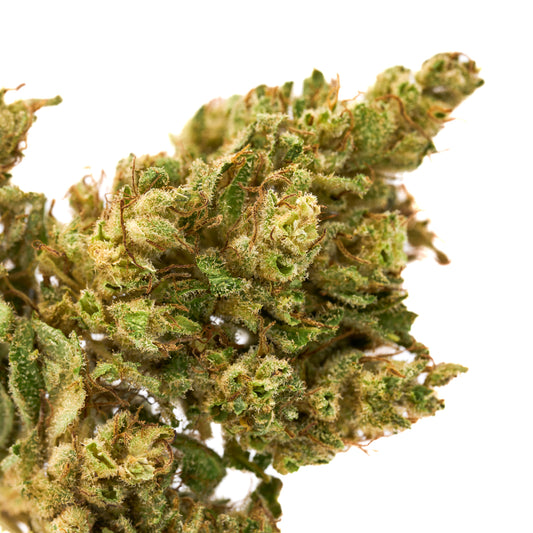
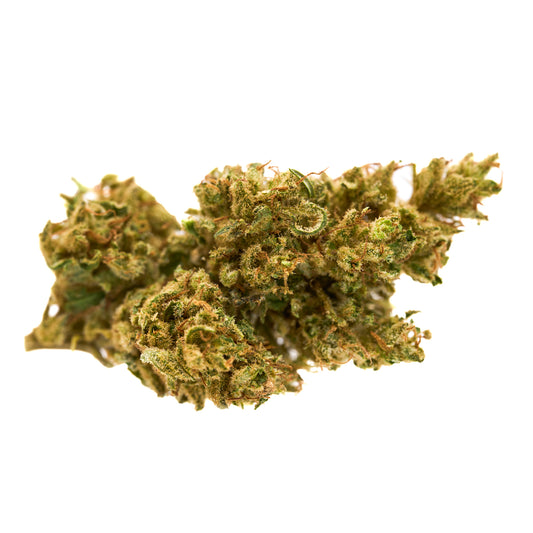
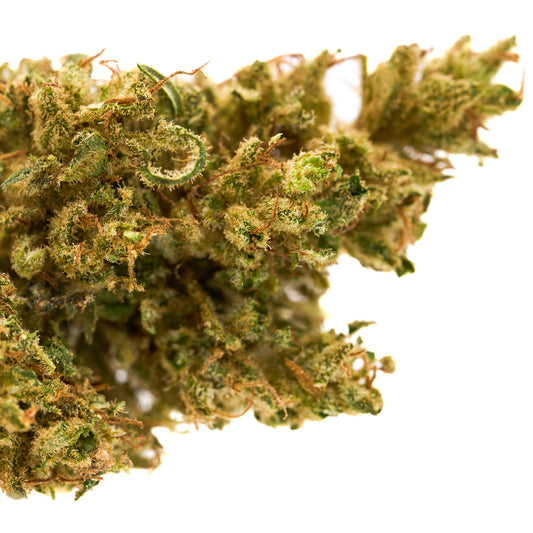
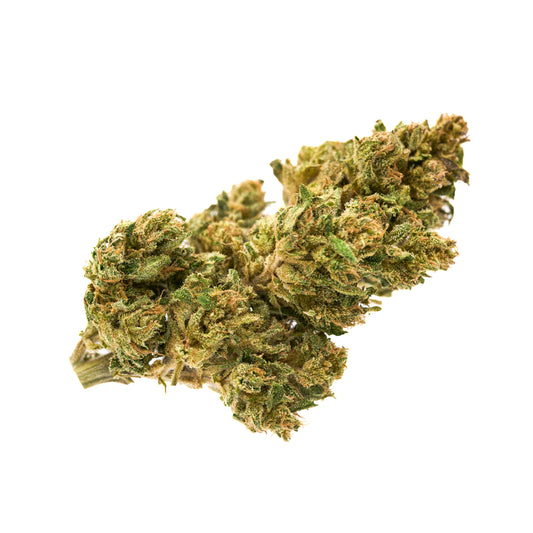
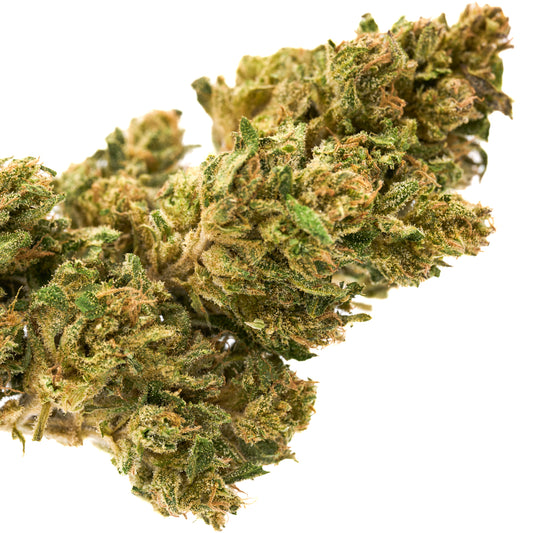



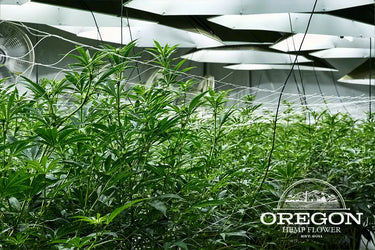

Leave a comment
Please note, comments need to be approved before they are published.